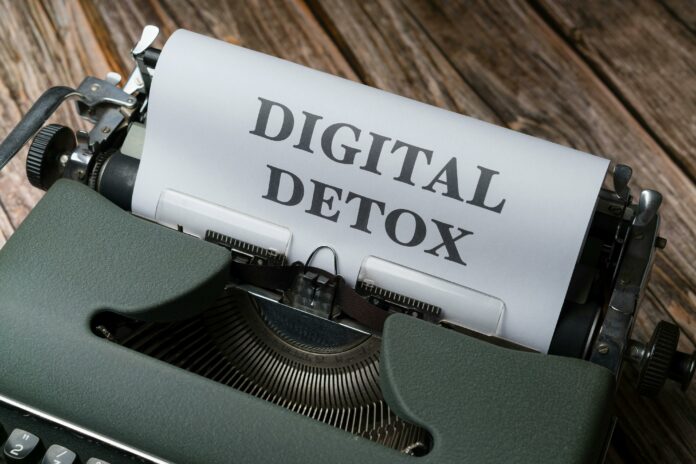In our technologically advanced era, the ubiquity of screens has become an integral part of daily life. From smartphones and tablets to computers and televisions, we are surrounded by digital devices that offer convenience, connectivity, and entertainment. However, the constant exposure to screens has raised concerns about its impact on both mental and physical well-being. This has given rise to the concept of a “digital detox” — a deliberate and temporary break from digital devices. In this article, we’ll explore the importance of balancing screen time for overall health and provide practical tips for a successful digital detox.
The Impact of Excessive Screen Time on Mental Health
The digital age has brought about numerous benefits, but the downside is the potential harm to mental health due to excessive screen time. One of the primary concerns is the negative impact on sleep quality. The blue light emitted by screens can disrupt the production of melatonin, a hormone responsible for regulating sleep. Prolonged exposure to screens, especially before bedtime, can lead to difficulty falling asleep and disrupted sleep patterns.
Moreover, constant connectivity through digital devices can contribute to heightened stress levels. The barrage of notifications, emails, and social media updates can create a sense of information overload, leading to increased anxiety and decreased focus. The pressure to respond promptly to messages and stay updated on various platforms can take a toll on mental well-being.
Physical Consequences of Screen Overuse
Beyond its effects on mental health, excessive screen time can also have physical repercussions. Prolonged periods of sitting and staring at screens can contribute to sedentary behavior, which is linked to various health issues, including obesity, cardiovascular problems, and musculoskeletal issues. The “tech neck” phenomenon, characterized by neck pain and strain due to prolonged tilting of the head while using devices, is becoming increasingly common.
Furthermore, extended screen time often leads to poor posture, eye strain, and headaches. The constant focus on digital screens can cause the eye muscles to become fatigued, contributing to digital eye strain, also known as computer vision syndrome. Symptoms include blurred vision, dry eyes, and headaches.
The Importance of a Digital Detox
Recognizing the potential adverse effects of excessive screen time, many individuals are turning to digital detoxes as a way to reset and rejuvenate both mind and body. A digital detox involves consciously reducing or eliminating the use of digital devices for a specified period. This break allows individuals to reconnect with the physical world, engage in face-to-face interactions, and prioritize activities that promote mental and physical well-being.
Tips for a Successful Digital Detox
Embarking on a digital detox may seem challenging, especially in a society that values constant connectivity. However, with thoughtful planning and commitment, it can be a transformative experience. Here are some practical tips to help you achieve a successful digital detox:
Set Clear Goals: Clearly define the purpose of your digital detox. Whether it’s to improve sleep, reduce stress, or foster in-person connections, having specific goals will guide your detox experience.
Establish Boundaries: Inform friends, family, and colleagues about your digital detox plan. Set clear boundaries, such as turning off notifications, and communicate your unavailability during this period.
Designate Tech-Free Zones: Identify specific areas in your home where digital devices are not allowed. This can include the bedroom to promote better sleep hygiene and the dining area to encourage mindful eating and social interactions.
Plan Alternative Activities: Fill your schedule with activities that don’t involve screens. This could include reading a physical book, going for a nature walk, practicing mindfulness or engaging in a hobby you’ve neglected.
Connect Face-to-Face: Use this time to strengthen your relationships by spending quality time with friends and family in person. Face-to-face interactions provide a different kind of connection that can be more fulfilling than digital communication.
Explore Offline Hobbies: Rediscover or explore new hobbies that don’t involve screens. Whether it’s painting, gardening, or playing a musical instrument, engaging in offline activities can be both enjoyable and therapeutic.
Practice Mindfulness: Incorporate mindfulness practices into your daily routine. This can include meditation, deep breathing exercises, or simply being fully present in the moment without the distractions of digital devices.
Gradual Reduction: If a complete digital detox feels daunting, consider a gradual reduction of screen time. Start with small, manageable steps and gradually increase the duration of your detox as you become more comfortable.
In a world dominated by digital technology, a mindful approach to screen time is crucial for maintaining a healthy balance between the virtual and physical realms. A digital detox serves as a valuable tool to recalibrate our relationship with technology, allowing us to prioritize our mental and physical well-being. By understanding the impact of excessive screen time and implementing practical strategies to reduce digital consumption, individuals can reclaim control over their health and enjoy a more fulfilling and balanced life.


